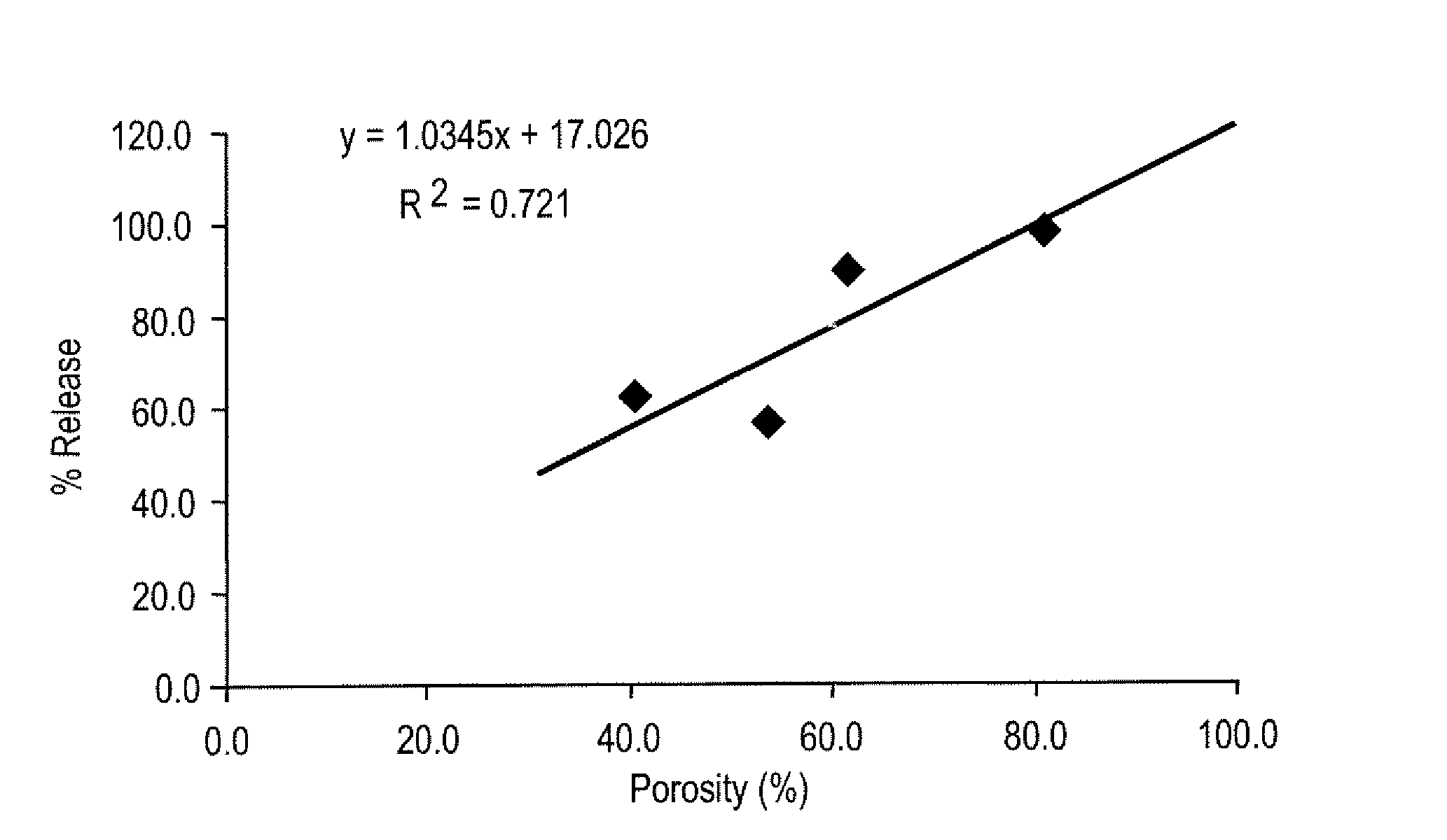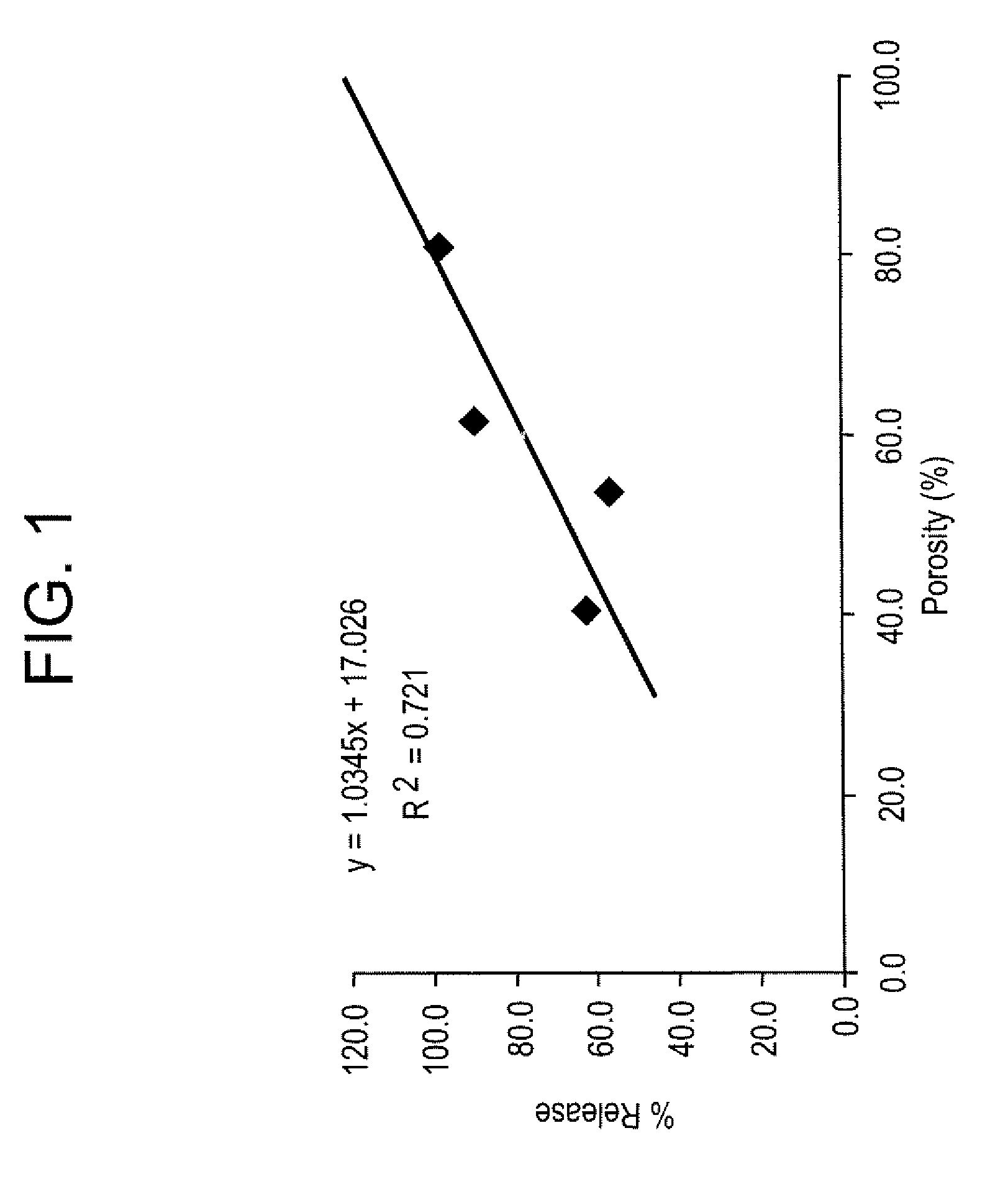Methods for making and using particulate pharmaceutical formulations for sustained release
a technology of pharmaceutical agents and formulations, applied in the field of pharmaceutical formulations, can solve the problems of unsatisfactory current delivery systems, undesirable toxicity or inadequate efficacy, and discourage patient complian
- Summary
- Abstract
- Description
- Claims
- Application Information
AI Technical Summary
Problems solved by technology
Method used
Image
Examples
example 1
Effect of Microparticle Porosity on Budesonide Release
[0152] Microspheres containing budesonide were prepared, using materials obtained as follows: budesonide was from FarmaBios S.R.L. (Pavia, Italy); phospholipid (DPPC) was from Avanti Polar Lipids Inc. (Alabaster, ΔL); polymer (PLGA) was from BI Chemicals (Petersburg, Va.); ammonium bicarbonate was from Spectrum Chemicals (Gardena, Calif.); and methylene chloride was from EM Science (Gibbstown, N.J.).
[0153] Six different lots of budesonide containing microspheres (B1 through B6) were prepared as follows. For each microsphere lot (B1-B4 and B6) 8.0 g of PLGA, 0.72 g of DPPC, and 2.2 g of budesonide were dissolved into 364 mL of methylene chloride at 20° C. For lot B5, 36.0 g of PLGA, 2.16 g of DPPC, and 9.9 g of budesonide were dissolved into 1764 mL of methylene chloride at 20° C. Lot B1 was prepared without a pore forming agent, and the process conditions and solids content of the solution to the spray dryer were used to create...
example 2
Effect of Microparticle Porosity on Fluticasone Propionate Release
[0156] Microspheres containing fluticasone propionate were prepared, using materials obtained as follows: fluticasone propionate was from Cipla Ltd. (Mumbai, India); phospholipid (DPPC) was from Chemi S.p.A. (Milan, Italy); polymer (PLGA) was from BI Chemicals (Petersburg, Va.); ammonium bicarbonate was from Spectrum Chemicals (Gardena, Calif.): and methylene chloride was from EM Science (Gibbstown, N.J.).
[0157] Six different lots of fluticasone proprionate containing microspheres (F1 through F6) were prepared as follows. For each microsphere lot, 3.0 g of PLGA, 0.18 g of DPPC, and 0.825 g of fluticasone propionate were dissolved into 136.4 mL of methylene chloride at 20° C. Lot F1 was prepared without a pore forming agent, and the process conditions and solids content of the solution to the spray dryer were used to create the porosity of the microspheres. Lots F2-F6 were prepared using the pore forming agent ammoni...
PUM
| Property | Measurement | Unit |
|---|---|---|
| volume average diameter | aaaaa | aaaaa |
| volume average diameter | aaaaa | aaaaa |
| volume average diameter | aaaaa | aaaaa |
Abstract
Description
Claims
Application Information
 Login to View More
Login to View More - R&D
- Intellectual Property
- Life Sciences
- Materials
- Tech Scout
- Unparalleled Data Quality
- Higher Quality Content
- 60% Fewer Hallucinations
Browse by: Latest US Patents, China's latest patents, Technical Efficacy Thesaurus, Application Domain, Technology Topic, Popular Technical Reports.
© 2025 PatSnap. All rights reserved.Legal|Privacy policy|Modern Slavery Act Transparency Statement|Sitemap|About US| Contact US: help@patsnap.com



